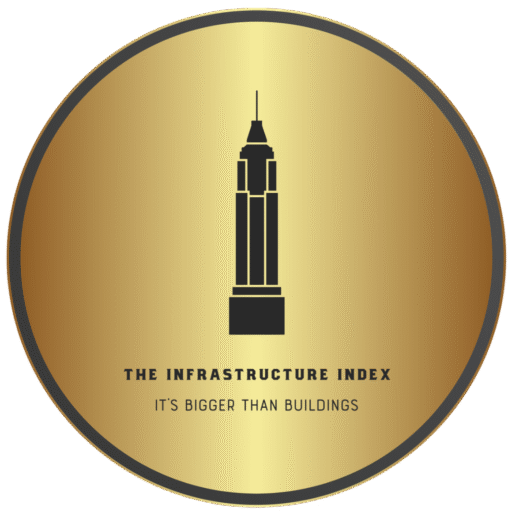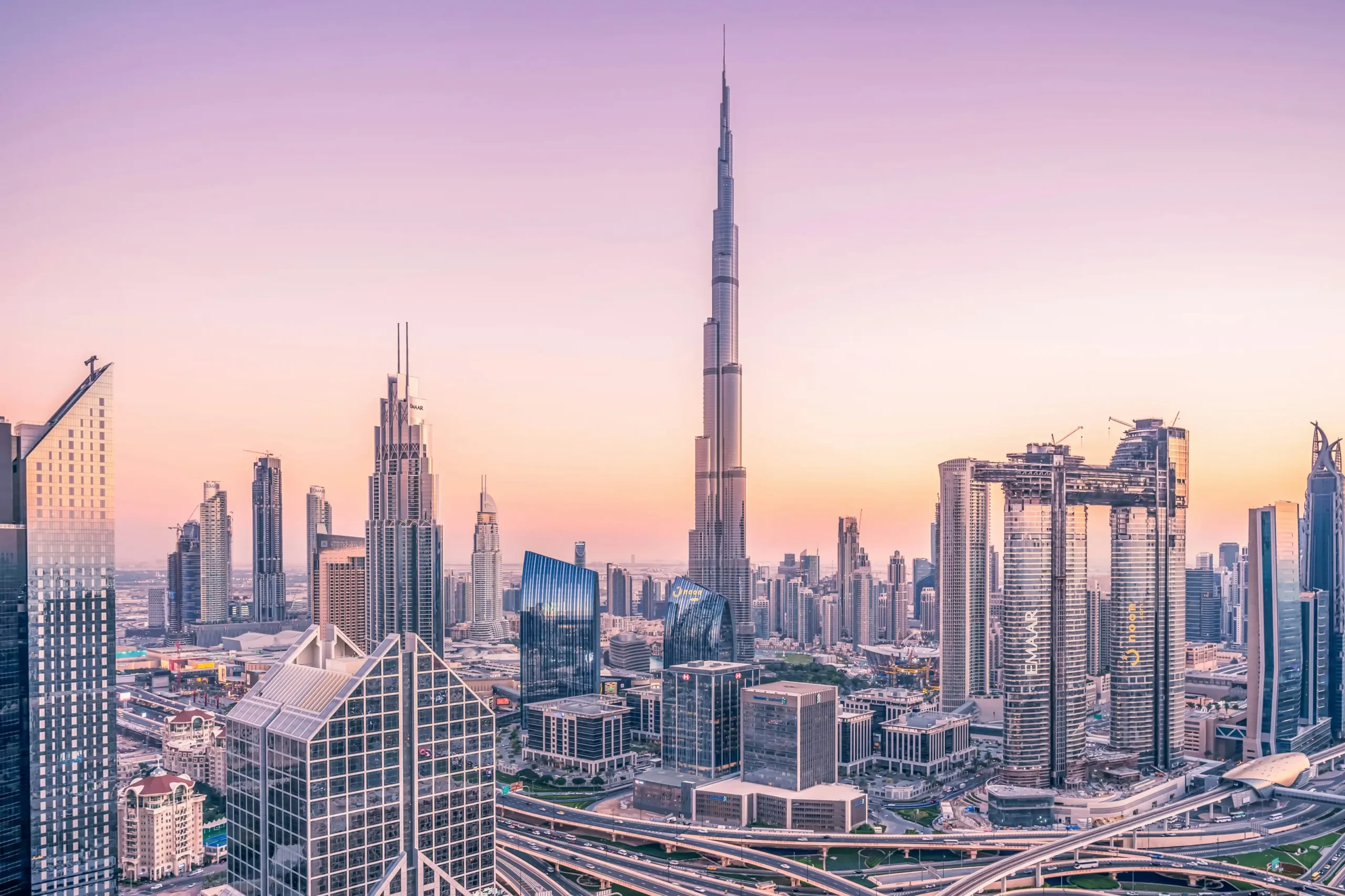Completed in 2010, the Burj Khalifa is the undisputed apex of modern skyscraper design. Rising to an astonishing 828 m (2,717 ft), it remains the tallest building in the world as of July 2025, according to the Council on Tall Buildings and Urban Habitat (CTBUH). More than just the tallest building, it is also the tallest man-made structure and tallest freestanding structure on Earth—an unmatched trifecta of architectural dominance. Developed by Emaar Properties and designed by Adrian Smith of Skidmore, Owings & Merrill, Burj Khalifa is a bold expression of technological prowess and aesthetic refinement.
Located at the heart of Downtown Dubai, United Arab Emirates, the tower’s slender form, shimmering cladding, and soaring spire make it an unmistakable focal point of the skyline. With over 22 million work hours invested in its construction, Burj Khalifa is not just a building—it’s a landmark achievement in global engineering.
Tower Stats
- Location: 1 Sheikh Mohammed bin Rashid Blvd, Dubai, UAE
- Completed: 2010 (spire finalized in late 2009)
- Use: Mixed-use—residential, corporate offices, Armani Hotel, observation, dining, and retail
- Height: 828 m (2,717 ft) including spire
- Floor Count: 163 above ground, plus multiple basement/mechanical levels
- Floor Area: Approx. 309,473 m² (3.33 million sq ft)
- Elevators: 57 elevators including double-deck and service lifts
- World Ranking (July 2025): #1 tallest building, structure, and freestanding structure globally
- Observation Deck Height: Up to 585 m (1,919 ft) at The Lounge on floors 152–154
- Estimated Cost: US $1.5 billion
- Construction Labor: Over 22 million work hours
- Water Usage: The building consumes 250,000 gallons of water, roughly 1/3 of an Olympic swimming pool, daily for cooling purposes
- Notable Facilities: World’s highest mosque (floor 158), highest swimming pool (floor 76)
Early Significance
When it topped out in 2009 and officially opened in 2010, Burj Khalifa immediately became a global record-breaker—not only the tallest building but the tallest anything ever built by humankind. The announcement reshaped the global skyline hierarchy overnight. Before Burj Khalifa, no structure had approached even 700 meters. Its scale ushered in the era of the “megatall” skyscraper, and Dubai became the face of this dramatic vertical leap.
It also represented a powerful statement about what was architecturally possible outside the traditional powerhouses of New York, Hong Kong, or Shanghai. Burj Khalifa redefined both the literal and symbolic limits of height.
Design and Engineering
Burj Khalifa’s form is inspired by the regional Hymenocallis flower, featuring a Y-shaped floor plan that stabilizes the structure and provides optimal space for residential and commercial uses. Its tapering profile spirals upwards in steps, culminating in a 243-meter spire that is architecturally integral—not just an antenna.
Constructed with reinforced concrete to level 156 and a steel spire above, the tower employs a buttressed core system to counter extreme wind loads and support its massive vertical rise. The design minimizes sway and enhances strength while allowing for expansive, unobstructed interior layouts.
The shimmering aluminum and glass curtain wall system—climate-optimized to reflect Dubai’s desert sun—creates an ever-changing façade that glows gold at sunset and sparkles by night.
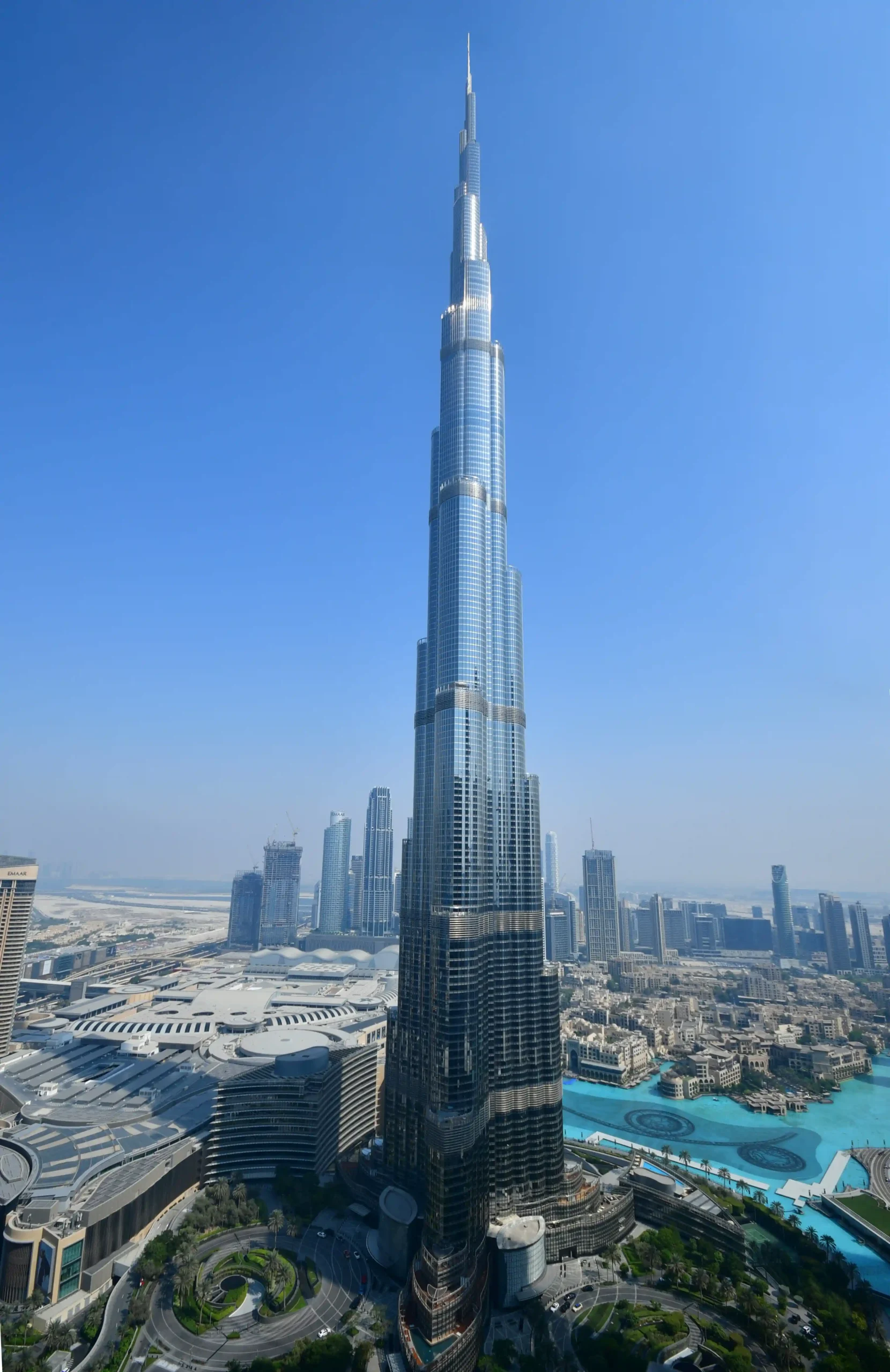
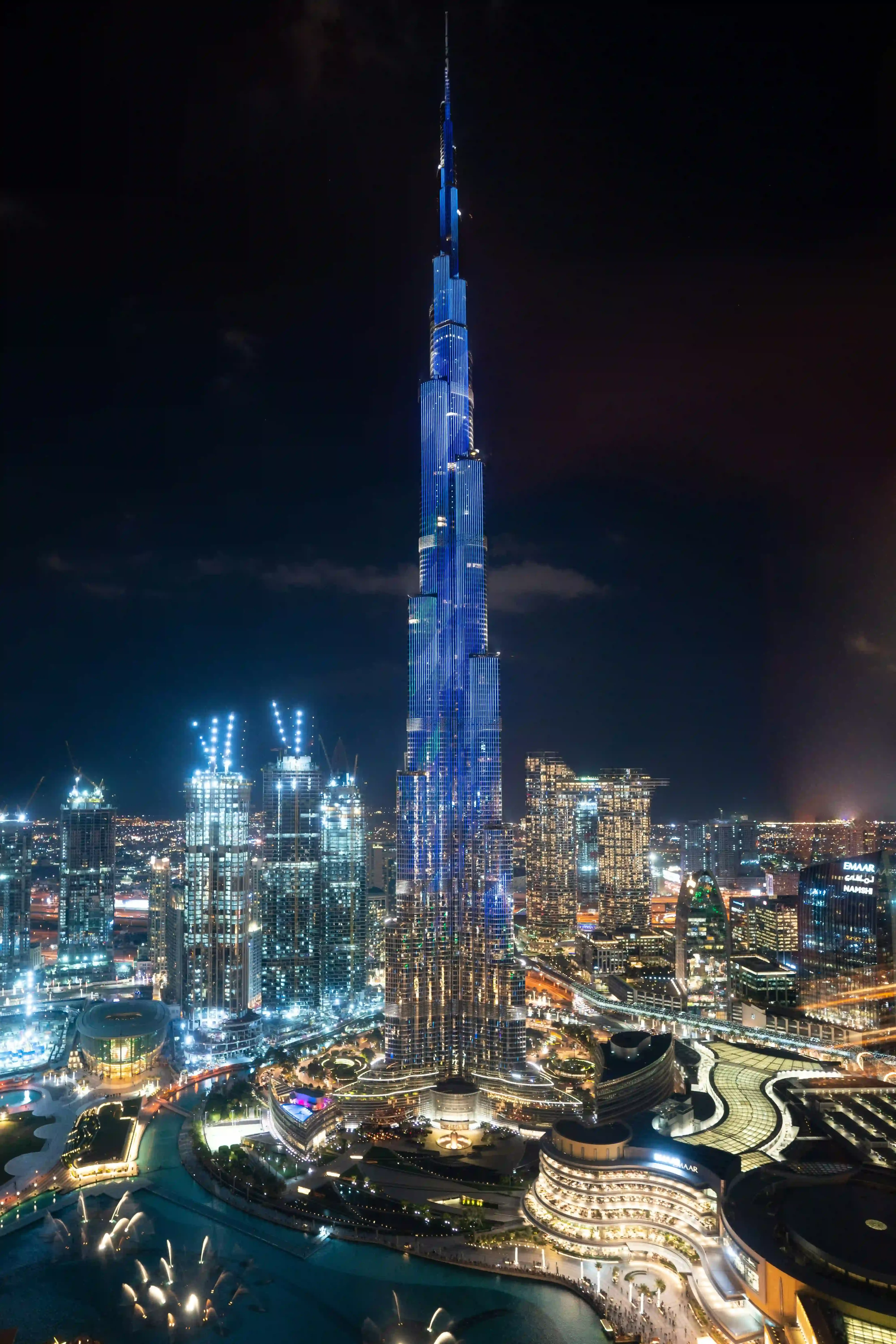
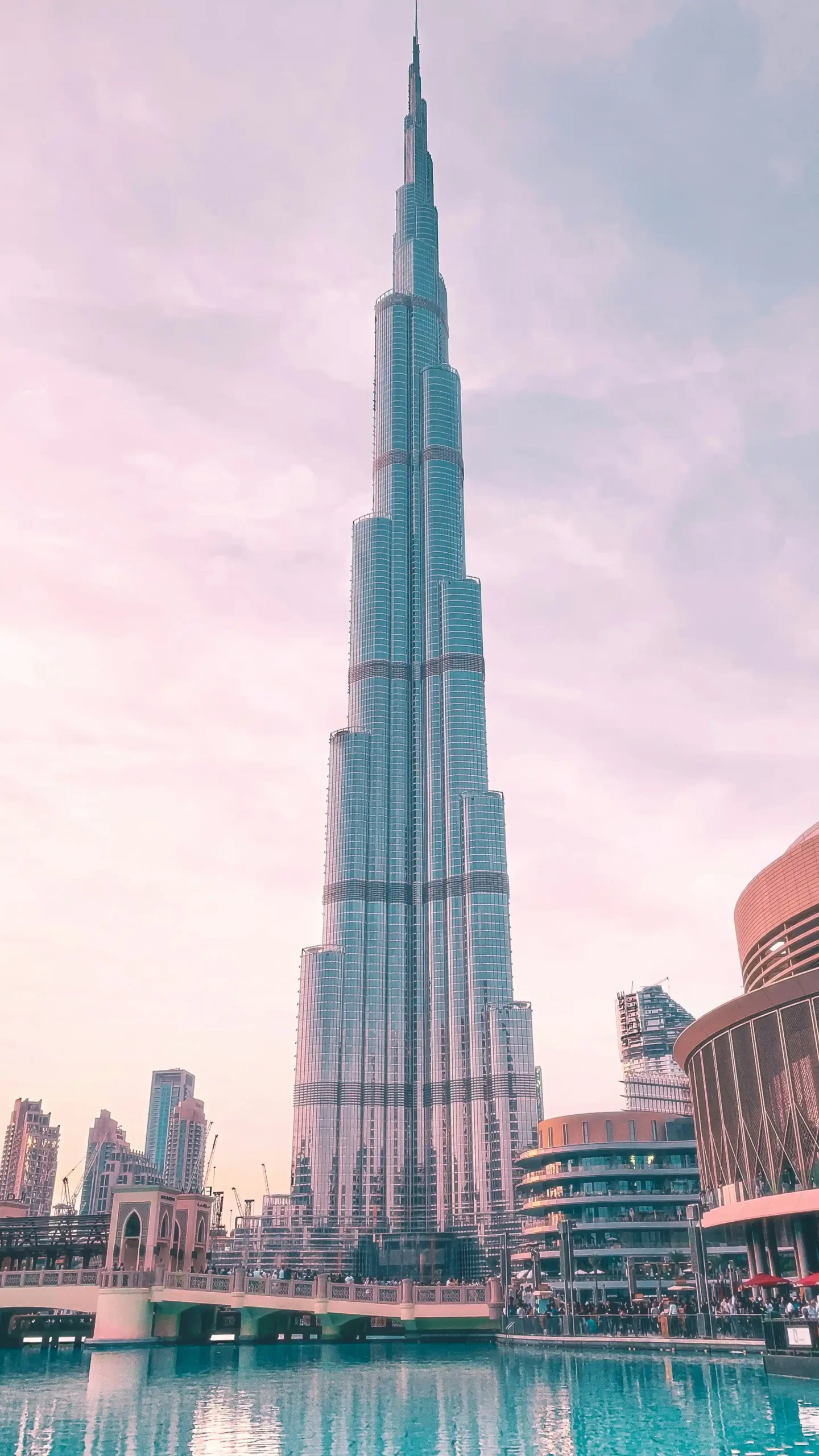
Thank you, Photographers! ZQ Lee on Unsplash, Riyas Mohammed on Unsplash, Timo Volz on Unsplash, Jeff Tumale on Unsplash
Observation Deck Experience
Burj Khalifa’s observation experience is multi-tiered and unmatched.
- At the Top (floors 124–125) is the most accessible observation level, located at 452 meters. It features interactive telescopes, immersive displays, and an outdoor viewing deck with sweeping city views.
- At the Top SKY (floor 148) sits higher at 555 meters, offering a more exclusive experience with smaller crowds and premium lounges. It was once the highest observation deck in the world until it was briefly overtaken by Shanghai Tower’s deck in 2019.
- The Lounge (floors 152–154) is currently the highest publicly accessible space in any building on Earth, reaching an elevation of 585 meters. Though technically a hospitality venue rather than a traditional observation deck, it offers luxurious seating, high tea service, and 360-degree views from a third of a vertical mile above ground.
These decks attract millions annually, helping make Burj Khalifa one of the most visited architectural destinations on the planet.
Global Context and Legacy
As of July 2025, no other structure surpasses Burj Khalifa in architectural height, height to tip, or height to occupied floor.
Burj Khalifa set a new standard for supertall design, one that is more than just an exercise in scale—it is a full integration of livable, usable, luxury space across mixed functions. Even buildings with greater vanity height percentages or higher roofs have not unseated its record-breaking status. It remains the world’s tallest building by all three CTBUH categories: architectural height, highest occupied floor, and tip height.
Economic and Cultural Role
Burj Khalifa is the anchor of the Downtown Dubai precinct and a powerful economic catalyst. It brings together elite residences, international office spaces, and the five-star Armani Hotel, while boosting adjacent property values in Dubai’s most prestigious real estate zone.
Culturally, it is a global ambassador for Dubai. From Tom Cruise scaling it in Mission: Impossible – Ghost Protocol to viral drone shots and New Year’s Eve fireworks, Burj Khalifa is omnipresent in visual culture. Its towering silhouette is instantly recognizable and proudly used in branding, tourism, and global media.
With the highest mosque and swimming pool in the world, the tower also integrates cultural and recreational spaces into the stratosphere—literally and symbolically elevating urban life.
Ongoing Relevance and Maintenance
Ongoing operations include an extensive building management system to maintain indoor climate, energy use, and security. The cooling system alone consumes 250,000 gallons of water per day, primarily to combat Dubai’s desert heat.
Recent upgrades include modernization of high-speed elevators, touchless technologies in public zones, and sustainability-oriented retrofits such as LED lighting, smart HVAC systems, and solar-powered water heating.
The maintenance schedule is rigorous, with teams regularly cleaning over 24,000 glass panels and servicing technical systems across 160+ floors. This ensures Burj Khalifa stays not only the tallest but among the most efficiently managed towers globally.
A Lasting Landmark
As of July 2025, the Burj Khalifa remains more than just the world’s tallest building—it is a global architectural benchmark. Its design, engineering, and symbolic significance continue to shape the narrative of 21st-century urbanism. The building has proven that height can be more than a number; it can be an enduring symbol of innovation, ambition, and national identity.
From its sweeping arc skyward to the world-class amenities embedded within, Burj Khalifa is a towering example of how vision and execution can push the boundaries of possibility—and create a legacy that truly touches the sky.
